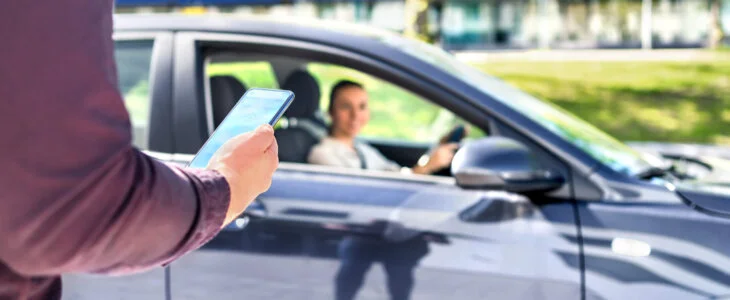Ridesharing has revolutionized the way people get around. It offers a convenient alternative to traditional taxis and public transportation. Lyft, in particular, has grown rapidly since its founding, becoming a key player in the industry. According to a 2016 Amazon Web Services (AWS) case study, Lyft was the fastest-growing rideshare company in the United States, available in more than 200 cities and facilitating 14 million rides monthly. With such widespread use, it’s no surprise that a Lyft car accident is common.
In California, determining liability and payment after a Lyft car accident can be complex. The answer depends on various factors, including who was at fault and the applicable insurance policies. Lyft also has its own policies that consider the ride’s status at the time of the accident. In this blog, Deldar breaks down who is responsible for paying after a Lyft car accident and what steps you should take to protect your rights.
Lyft’s Insurance Policy
After a Lyft car accident, the next question is always: who pays for the damages? The answer depends mostly on insurance policies. Lyft provides insurance coverage for its drivers, but it works differently depending on what the driver did when the accident occurred. Lyft’s insurance coverage is divided into three distinct periods:
- Period 1: The driver is online and waiting for a ride request.
- Period 2: The driver has accepted a ride but has not yet picked up the passenger.
- Period 3: The passenger is in the vehicle, and the ride is in progress.
During Period 1, Lyft provides limited liability coverage, but the driver’s personal insurance is usually the primary source of compensation. In Periods 2 and 3, Lyft provides up to $1 million in liability coverage, covering injuries and damages resulting from the accident. Understanding which period the driver was in is crucial for determining who pays. This brings us to the next piece of the Lyft car accident puzzle, which driver is at-fault?
When The Lyft Driver Is At-Fault
If the Lyft driver is responsible for causing the accident, the rideshare company’s insurance typically steps in. During Periods 2 and 3 (defined above), Lyft’s insurance offers up to $1 million in coverage for bodily injury and property damage. However, during Period 1, Lyft provides only minimal liability coverage, meaning the driver’s personal insurance may need to cover the damages.
In cases where the Lyft driver is clearly at-fault, you can file a claim against Lyft’s insurance company to recover your losses. This could include medical expenses, lost wages, and compensation for pain and suffering. However, if the accident occurred in Period 1, dealing with both Lyft’s insurance and the driver’s personal policy can complicate matters, making legal assistance invaluable.
When Another Driver Is At-Fault
If another driver causes a Lyft car accident, the at-fault driver’s insurance pays for damages. In this scenario, you would file a claim against the at-fault driver’s insurance company. However, accidents can get tricky when the other driver is uninsured or underinsured. Fortunately, Lyft provides uninsured/underinsured motorist coverage in Periods 2 and 3. This coverage helps ensure that even if the other driver doesn’t have adequate insurance, Lyft’s policy can still provide compensation for injuries and damages.
Passenger Rights & Coverage
As a passenger, taking immediate steps after an accident is important. Gather information, seek medical attention, and report the accident to Lyft. Sometimes, you may also need to file a police report. Filing a claim with Lyft’s insurance is straightforward, but having legal guidance can help ensure you’re fully compensated for your injuries. Other elements of the situation are to consider, such as pedestrians and cyclists. The more people involved in a Lyft car accident, the more complicated your case becomes.
California Laws In A Lyft Car Accident
California follows a fault-based system, meaning that the person responsible for the accident is also responsible for paying for damages. The state also follows a comparative negligence rule, meaning that if more than one party is found to be at fault, they will share the responsibility proportionally. This rule can impact how much compensation you receive in a Lyft car accident, especially if you are partially at fault.
Determining who pays after a Lyft car accident in California can be complicated. Whether the Lyft driver, another motorist, or even the rideshare company is responsible depends on the specifics of the accident. If you’ve been involved in a Lyft car accident, contact Deldar for a free consultation today at (844) 335-3271. We’re here to help you along the way and get the compensation you deserve!


